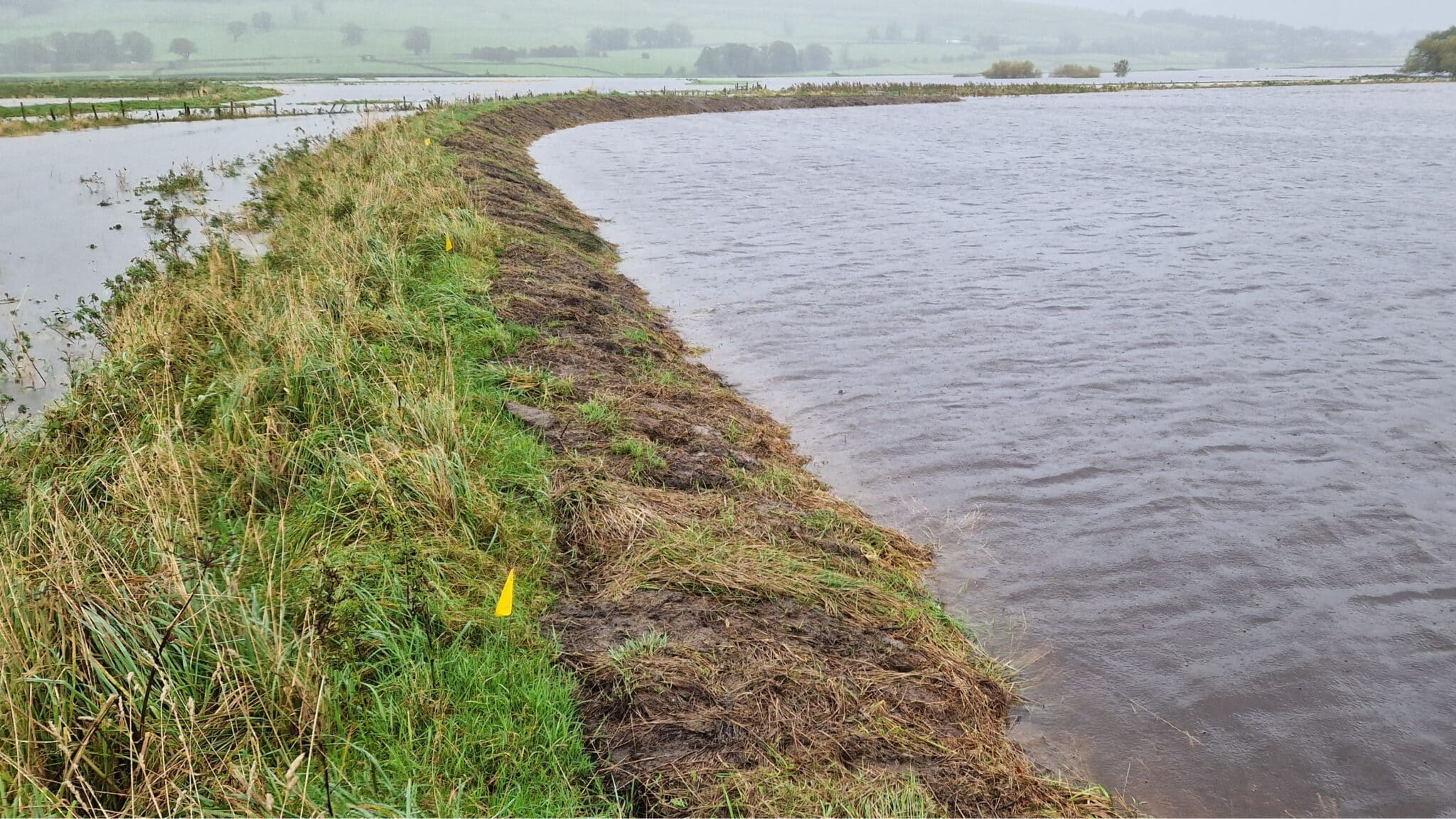
What is Natural Flood Management (NFM)?
Natural Flood Management (NFM) simply means using natural processes to regulate water flow and reduce flood risk. There are many diverse types of NFM strategies which are all slightly different. However, they all have something in common; they all have reconnecting and renaturalising river systems at their core.
Here are some of the ways our work can contribute to safeguarding communities from the threat of floods.
River Restoration
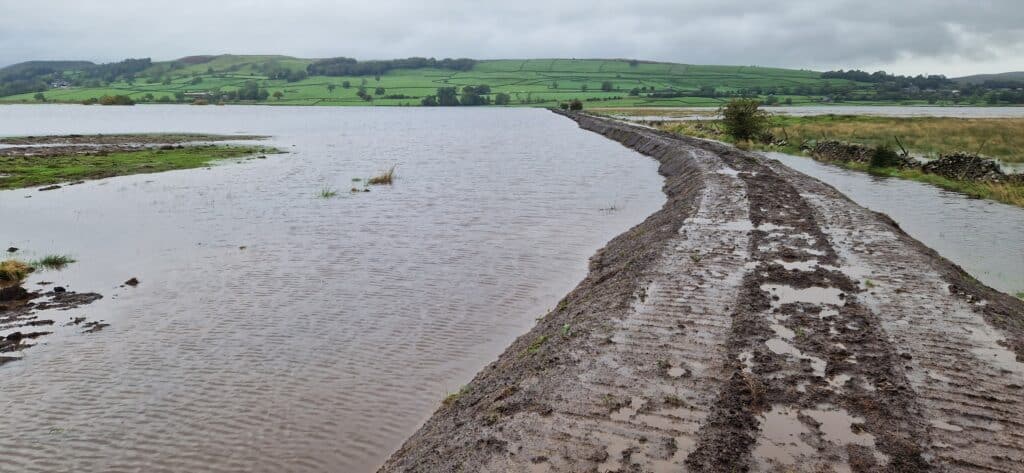
Human alterations such as weirs, channel straightening, and flood embankments disrupt natural river processes. River restoration often involves resolving these issues. When we restore and reconnect rivers, like we have at Wigglesworth Hall, we give them the room to act naturally, which usually means they hold a greater volume of water. As a bonus, these natural features require minimal maintenance, although they often involve significant river engineering projects.
Leaky dams
Leaky dams are another effective NFM technique. These structures mimic the functions of naturally fallen trees, holding back water, regulating rivers flows, and helping to redirect water to other areas. Unlike dams and weirs, these structures are made of natural, usually locally sourced, materials and don’t cross the entire width and depth of the river. This means that fish and other wildlife can still move up and downstream. Our work at Brackenhurst is a great example of this.
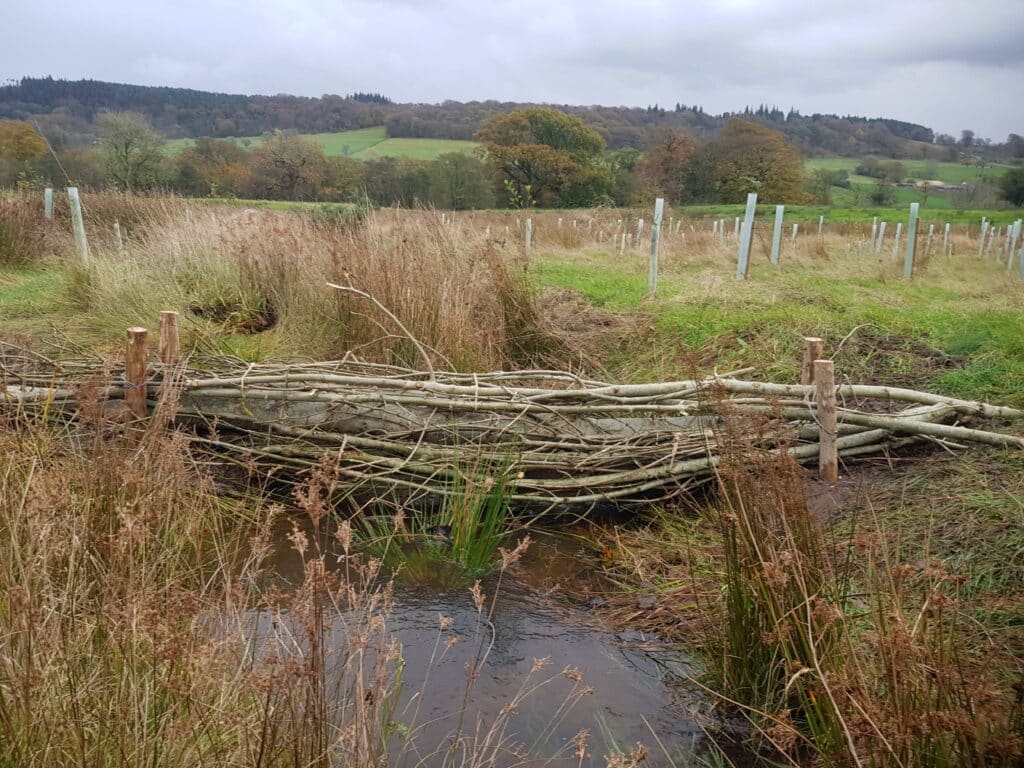
Tree Planting
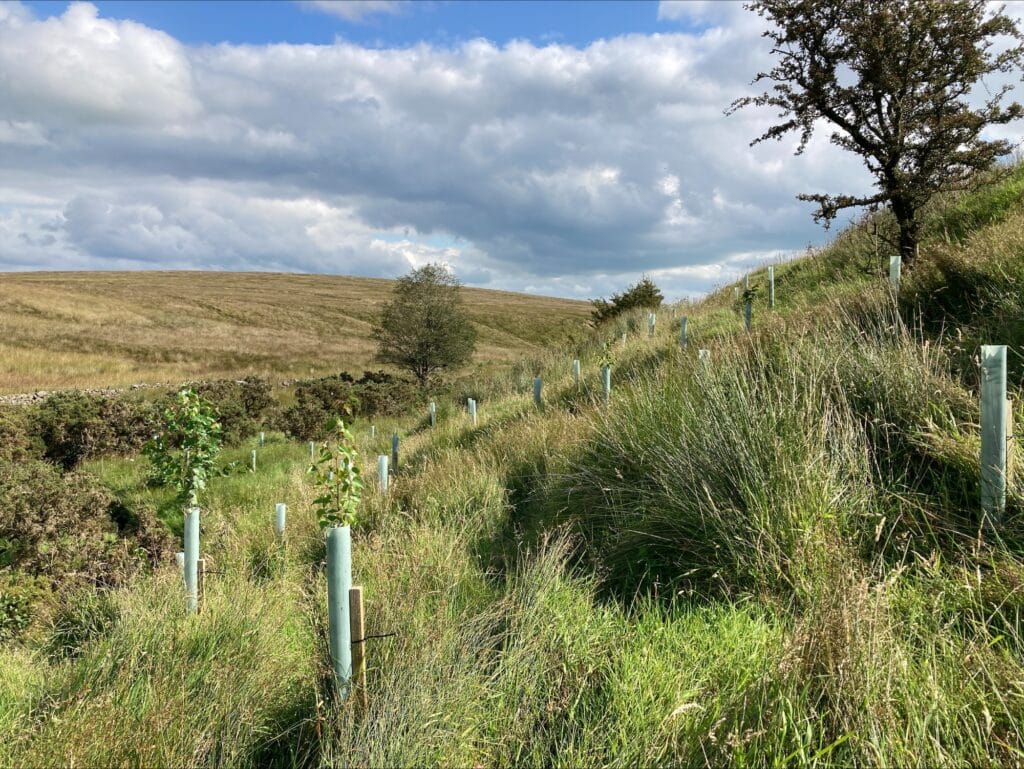
Trees are a great NFM tool. They absorb rainwater, enhance soil infiltration rates, stabilize river banks, and regulate the flow of water. When added to together, the effect is a slowing down of water flow, decreased surface runoff, and a reduction in the volume and speed of floodwaters downstream. Tree planting also offers long-term benefits such as reduced flood risk, improved water quality, increased biodiversity, and carbon storage for climate regulation.
Peat restoration
Peat is fabulous at holding water, it naturally acts like a huge sponge! That’s why we work on the restoration and stabilisation of eroded moorlands through strategic peat restoration and rejuvenation. This helps the peat hold more water and also prevents further erosion, promotes vegetation growth, increases biodiversity, improves water quality, and acts as a significant carbon sink to regulate climate change.
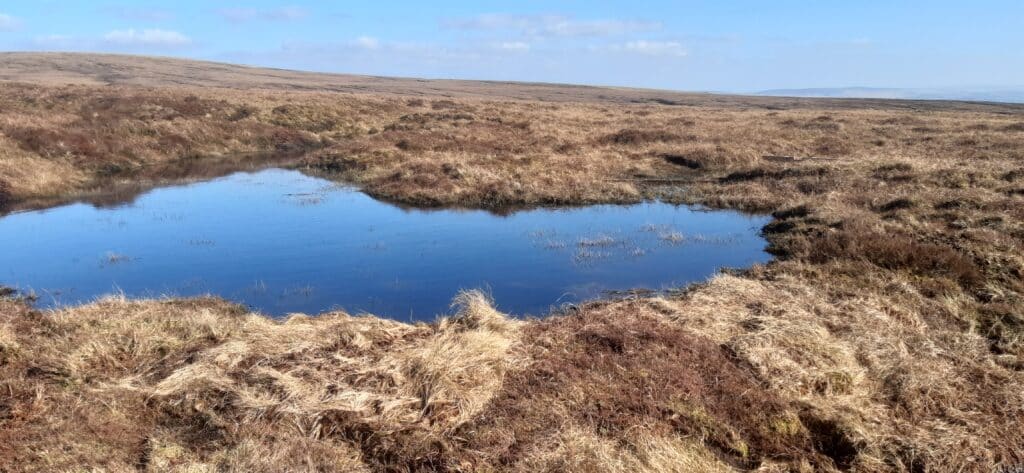
Wetlands
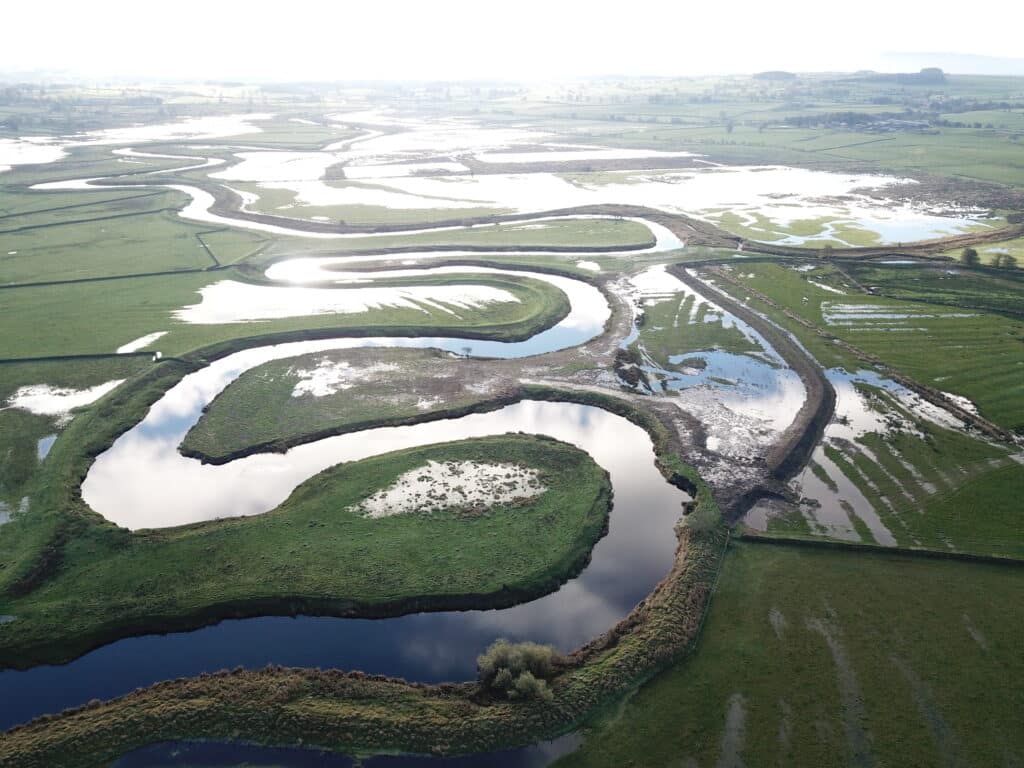
By strategically storing floodwater upstream, structures like wetlands, ponds, and wader scrapes help to alleviate downstream flooding. Storage outside of the river channel brings benefits such as reduced flood risk, enhanced aesthetic value, and increased biodiversity through the creation of habitats. This type of work is especially beneficial for breeding wading birds such as curlew, snipe, and lapwing.
Agricultural Land Management
Working with farmers is crucial for upstream flood control. Methods such as minimizing soil compaction and runoff control help to increase the land’s water retention capacity. This, in turn, reduces soil erosion and improves overall soil quality. The benefits of agricultural land management include reduced flood risk, more efficient crop growth, healthier livestock, improved water quality, and healthier soils with enhanced permeability.
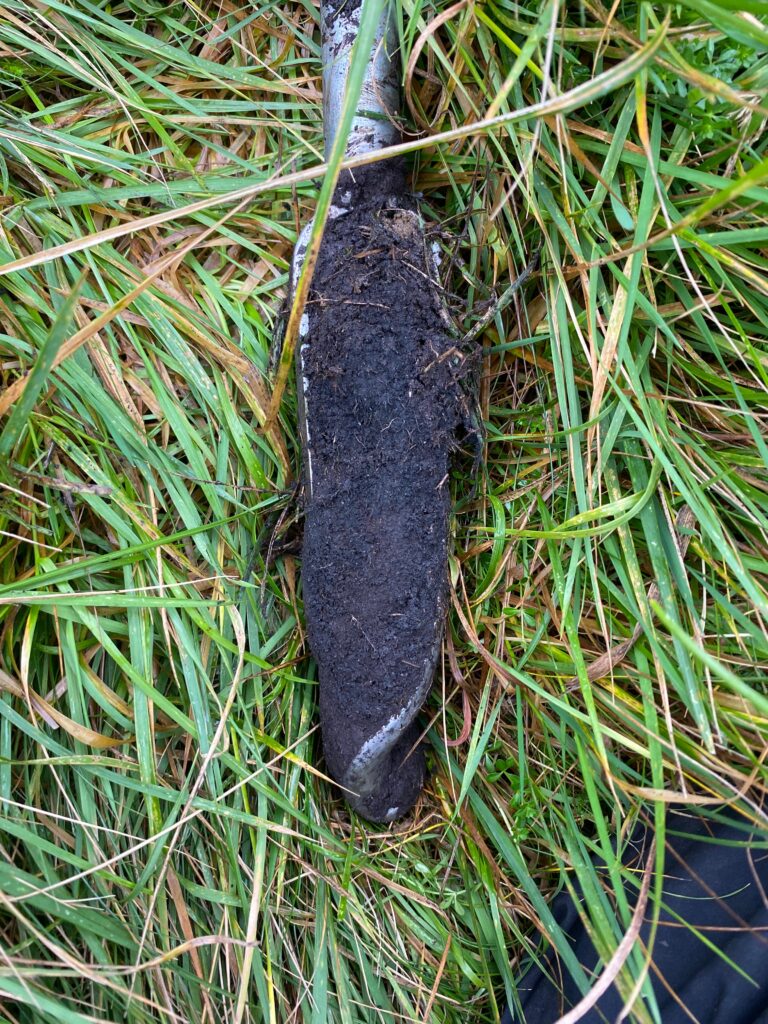
So, we hope this shows that Natural Flood Management embraces a holistic approach that integrates various methods to harness the natural abilities of healthy ecosystems. By working with nature, these techniques offer sustainable solutions to mitigate flood risks and create resilient communities.

